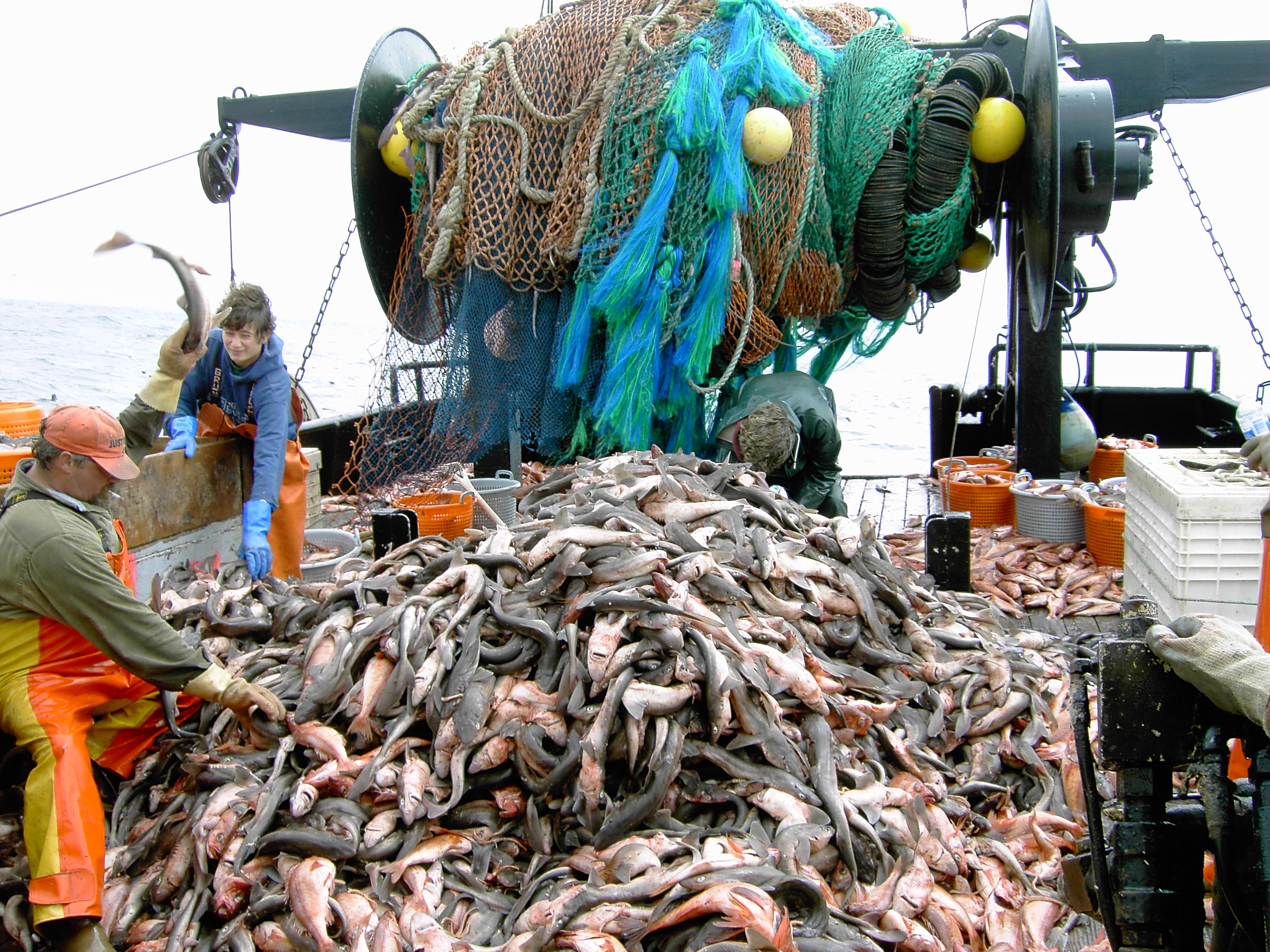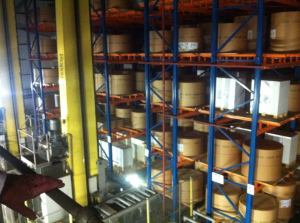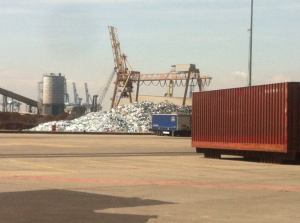BLOG by Richard Scott, 30 June 2014



Seaborne trade in cereals and oilseeds has been centre-stage in the maritime world for a very long time. From early civilisations to the present day, movements of these commodities have been a familiar feature of the international shipping business. In the contemporary era, what is referred to as grain and soya trade is broadly spread geographically, with many importers and many exporters participating. Among individual importing countries, one is now by far the largest and another, now a relatively minor participant, was the largest player three decades earlier.
China has emerged in the twenty-first century as the biggest single importer, mainly of soyabeans although grain (comprising wheat plus corn and other coarse grains such as barley) is becoming more significant. Not so long ago, in the nineteen-eighties, it was the old Soviet Union that was in a similar position of prominence. In those days Soviet grain imports – mainly wheat and corn, accompanied by limited volumes of soyabeans – were an especially difficult-to-predict element of global dry bulk commodity trade, and the sudden emergence of a large Soviet buying programme sometimes had a jolting impact on the panamax bulk carrier market and freight rates.

During much of the 1980s, the Soviet Union’s demand for grain from foreign suppliers often mesmerised attention in both commodity and freight markets. At its peak this import demand comprised a maximum 25 percent of total global grain and soya trade, and was typically a lower percentage. So it was not really dominant but nonetheless was huge, very variable from year to year, famously unpredictable, and the abrupt changes in monthly shipment volumes gave the trade a reputation for highly erratic progress. Over the following decade it fell back to relatively small volumes.
By contrast the current number one purchaser China, which in 2013 comprised just under 20 percent of global grain and soya imports, exhibits steadier momentum. The usual pattern of activity does not have such a massive disrupting effect on markets as that of the previous top importer, thirty years earlier. Moreover, the longer-term trend for Chinese imports is, arguably, clear: substantial evidence points to vigorous further expansion through the 2010s and perhaps beyond.
Shipping’s Kremlin-watchers
In the decade or so prior to the break up of the Soviet Union into its constituent republics at the end of 1991, grain purchasing on international markets was tightly controlled by the state through its buying agency Exportkhleb. Consequently, Kremlin-watching in the grain and freight markets became an art form. Traders, shipbrokers and shipowners were looking for any signs indicating how much imported grain would be needed, the countries of origin, and what were the likely shipment periods. All these elements greatly affected bulk carrier demand and freight rates.
Dry cargo shipbrokers often focused intently on grain. Although by 1980 iron ore already had been for some time the biggest seaborne dry commodity trade, and coal trade volumes exceeded grain volumes by the mid-1980s, grain retained a disproportionately great influence on the freight market. A widely held view, much of the time, was that grain moved the freight market up and down (although this was not always meant completely literally: it was a broad generalisation).
Several factors explained grain’s market-moving ability. Substantial trade volumes typically entered the market abruptly and, often, unexpectedly. Demand for shipping capacity was augmented by longer loading and discharging operations (compared with mineral trades, for example) with slow discharge rates especially evident in many ports. Delays due to port congestion could be a feature. Relatively inefficient use of a ship’s deadweight (a measure of carrying capacity based on weight lifted) was observed, because some grains were ‘light’ and would fill a ship’s cubic capacity without making full use of the weight capacity available.
Also, characteristically, much grain cargo transportation was arranged on a ‘spot’ basis. Movements often did not form steady flows but were ‘bunched’ (due to the nature of grain buying activity with its fluctuations both in timing and geographically). The related predominant single-voyage charters, as the main chartering mode, amplified the impact of the other features.
All these ship demand enhancing and market-moving aspects were prominently displayed in the Soviet grain import trades. But it was the sheer magnitude (relative to other dry cargo movements in that era) of the Soviet Union’s requirements, and the variability of volumes coupled with forecasting difficulties, which magnified the freight market impact.
Conversation among shipbrokers meeting on the trading floor of the impressive old Baltic Exchange building in St Mary Axe, London had often turned to grain trade. One familiar refrain was “people need to eat” and, as if to underline the point, this discussion might be soon followed by a visit to the luncheon room downstairs to consume a healthy repast. Although perhaps simplistic, the identification of necessary food intake based on imported grain, as justification for a positive view of grain trade and its requirement for shipping capacity, was essentially correct. In the second half 1970s world seaborne grain trade had increased by an average 7 percent annually, although in the 1980s growth was much slower, averaging under 1 percent annually.
More sophisticated arguments were discussed in the 1980s when analysts visited the US Department of Agriculture’s sprawling complex in downtown Washington DC. Talk immediately turned to the Soviet Union’s grain imports. Questions included how much would they buy, over what period, and from where. USDA economists wanted to know whether there were any indications of unusual large-scale activity in the charter markets which could give advance clues to the Kremlin’s import programme ahead, and what might be the impact on ocean freight rates. Answers, if there were any, were often hazy. Most of the time, nobody really knew until the anticipated activity actually happened.
Potent performer: the old Soviet Union
What was the extent of Soviet grain imports in the 1980s and why were the volumes so changeable? Annual imports, mainly wheat plus corn and other coarse grains, together with relatively small quantities of soyabeans, varied between 29 million tonnes and 56mt. For six individual years within the decade, the range was fairly narrow, at between 29mt and 35mt. Three years saw 40-49mt. Within these totals, soyabeans comprised about one million tonnes annually.
The Soviet grain imports peak occurred in trade year 1984/85 (a twelve months’ period measured from the middle of one calendar year to the next, commonly used in agricultural trade statistics) when 56mt was recorded. It was preceded and followed by volumes at the low end of the range, 34mt in 1983/84, and 32mt in 1985/86. This surge and retreat, and some other sizeable year-to-year changes during the decade, had a great impact on short-term demand for bulk carriers.
Large annual variations in the Soviet Union’s domestic grain production, and associated variations in state procurements, mainly explain the fluctuations in foreign purchases, although numerous other factors were reflected in import changes as well. When a poor harvest (compared with the previous harvest) was experienced, mainly caused by changed weather patterns, higher imports were arranged in the ensuing twelve months to offset the shortfall. Conversely, a good harvest was followed by reduced imports. For example, a 20mt (20 percent) fall in grain output in the 1984 harvest, reducing the total to 173mt, prompted the following 23mt imports increase to 56mt.
Production variations (both volume and quality) and, especially, severe shortfalls in some years were not entirely due to weather changes. Temperature or rainfall extremes were detrimental, as in most other grain producing countries. Varying degrees of ‘winterkill’ were experienced, while an occasional sukhovey (extremely hot, desiccating wind) sweeping across the Steppelands of Kazakhstan and Western Siberia severely cut grain yields. Additionally, Soviet farm operational efficiency was not always adequate, and sometimes noticeably lacking, partly reflecting state organisational deficiencies. The results were seen in avoidable planting delays and insufficient seed supplies; inadequate fertiliser or pesticide supply, or mistimed application, or both; and farm machinery shortages or breakdowns and lack of spare parts (for tractors, combine harvesters and other machines).
Another clearly observable influence affecting Soviet grain import requirements was rising demand. Consumption as human food remained fairly static over most of the 1980s period, at about 47mt per year. By contrast, consumption within the feed sector (livestock feed) rose by over 2mt annually, or about 20 percent cumulatively during the decade, amid intentions to boost meat and dairy products availability.
On the supply side, an endemic problem was the large amount of the domestic grain harvest wasted as a result of system inefficiencies. Losses before and after harvesting, and in transport, storage and processing, were proportionately much higher than seen in other countries. USDA economists made estimates for ‘dockage-waste’ varying between 16mt and 30mt annually during the 1980s (10-15 percent of gross harvest output). These amounts included allowances for above-average moisture content (exaggerating the grain volume), and extraneous matter included such as weeds, soil and pebbles which also inflated the total, as well as transport and handling losses.
Soviet Union imports were also affected by changes in grain stocks, and in availability of other domestic crops contributing to livestock feed, known as forage crops. Finally, the amount of grain bought from foreign suppliers depended upon hard currency availability (earnings acquired from oil exports were influential), payment terms, international grain prices, and foreign exchange rates. Ocean freight costs were significant as well.
Powerful player: China
Compared with the predecessor prime player the factors explaining China’s emergence, as the top individual importer of grain and soyabeans, have been more transparent. The country has remained largely self-sufficient in wheat, corn and other coarse grains (as well as rice), although there are now signs of greater dependence on foreign supplies. For soyabeans, which comprise the biggest proportion of overall grain and soya imports into China, there has been a strong upwards trend over many years as domestic production remained limited amid vigorously expanding consumption.
In calendar year 2013, China’s imports of grain and soya reached 75mt, comprising approximately one-fifth of global seaborne movements in that category. The annual total had expanded rapidly over the preceding decade, from 23mt in 2003, a cumulative 234 percent rise. Within this total, the dominant soyabeans imports more than tripled, to reach 63mt last year. Moreover, a sustained expansion seems likely to continue in the years ahead, based on evidence of underlying influences.
Consumption growth was an especially notable trend affecting imports. The capacity of Chinese oilseed crushing mills has been greatly enlarged so that imports of soyabeans, the form in which most foreign soya is purchased, can be processed into the required meal and oil output. Soyameal is a key high-protein ingredient of livestock feed, usage of which has expanded amid increasing domestic production of animals providing meat and dairy products to satisfy rising consumer demand and amid large-scale poultry exports. Soyaoil consumption in food manufacturing and home cooking has risen greatly, resulting from growth in these activities.
The strong soyabeans import trend also has reflected lack of growth, and subsequently reduction, of domestic soyabeans production in China. During the period of five years up to and including 2010, soyabeans harvests averaged just over 15mt. The next three years saw a declining trend to about 12mt in 2013. Another factor boosting imports was the government’s policy of building up strategic reserve stocks (responding to growing dependence on foreign suppliers).
China has been successful in raising its wheat, corn and other coarse grains output in recent years, despite limiting factors such as land and water availability. This trend was encouraged by continuing reforms over an extended period, as the agricultural sector experienced a transition from a planned economy to a market based economy. Last year’s harvest, totalling 346mt, was 51 percent higher than average annual output in 2003-2005. But the domestic market for these grains has tightened, amid rising consumption. Consequently imports, while still relatively small, have increased. In 2013 the total reached over 12mt, an almost seven-fold rise compared with a decade earlier.
Beneficiary: the shipping industry
Both these examples – yesterday’s Soviet Union and today’s China – show how, in different periods, a grain and soya importing country became a very prominent maritime trade feature. In each case the impact on the global shipping industry created substantial additional employment for bulk carriers. Much of the trade involved long-distance voyages from loading ports in the USA, Canada and South America (Brazil and Argentina), as well as shorter voyages from elsewhere, further enhancing ship employment. China is expected to remain an expanding user of maritime transport capacity for this purpose, over the decade ahead.
Direct effects on the ocean freight market, especially when sharp changes in chartering activity occurred, were more prominent during the earlier episode. Soviet chartering often had a great impact on market conditions and freight rates for panamax and other size bulk carriers, although not always for extended periods. The intensity of impact varied amid differing tonnage (vessel) supply/demand balances and amounts of tonnage available on the open market for spot employment. In the early- to mid-1980s, a general global tonnage surplus tended to mitigate the positive impact on freight rates of temporary extra trade volumes.
Although the ‘China effect’ from this commodity category in the present era has not been as striking as the earlier ‘Soviet effect’ was at times, it looks set to be longer-lasting. But all predictions should be treated with caution. As the Chinese proverb says: “he who lives by the crystal ball will die of ground glass”. A useful reminder!
Richard Scott
Visiting Lecturer, Greenwich Maritime Institute and MD, Bulk Shipping Analysis





















